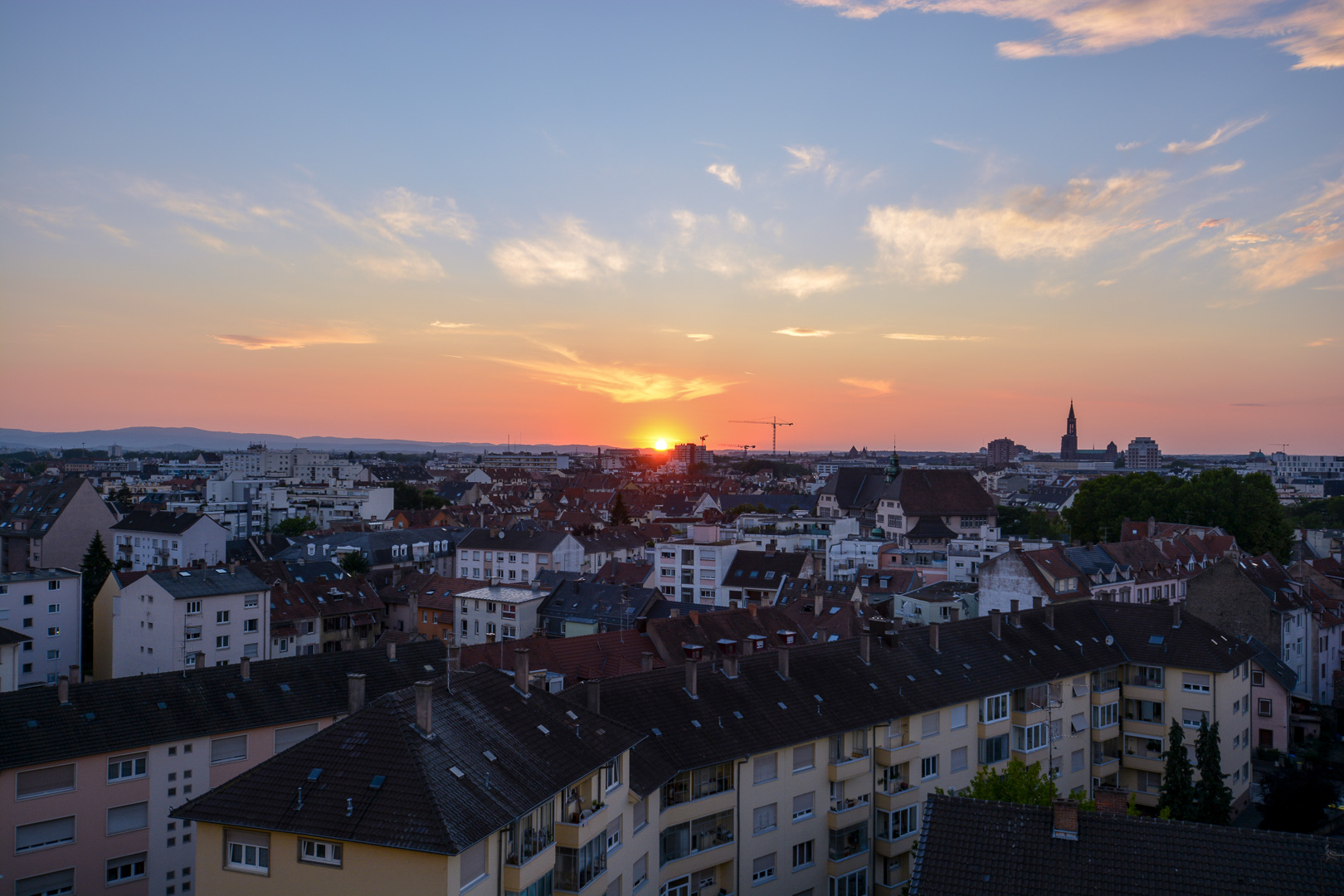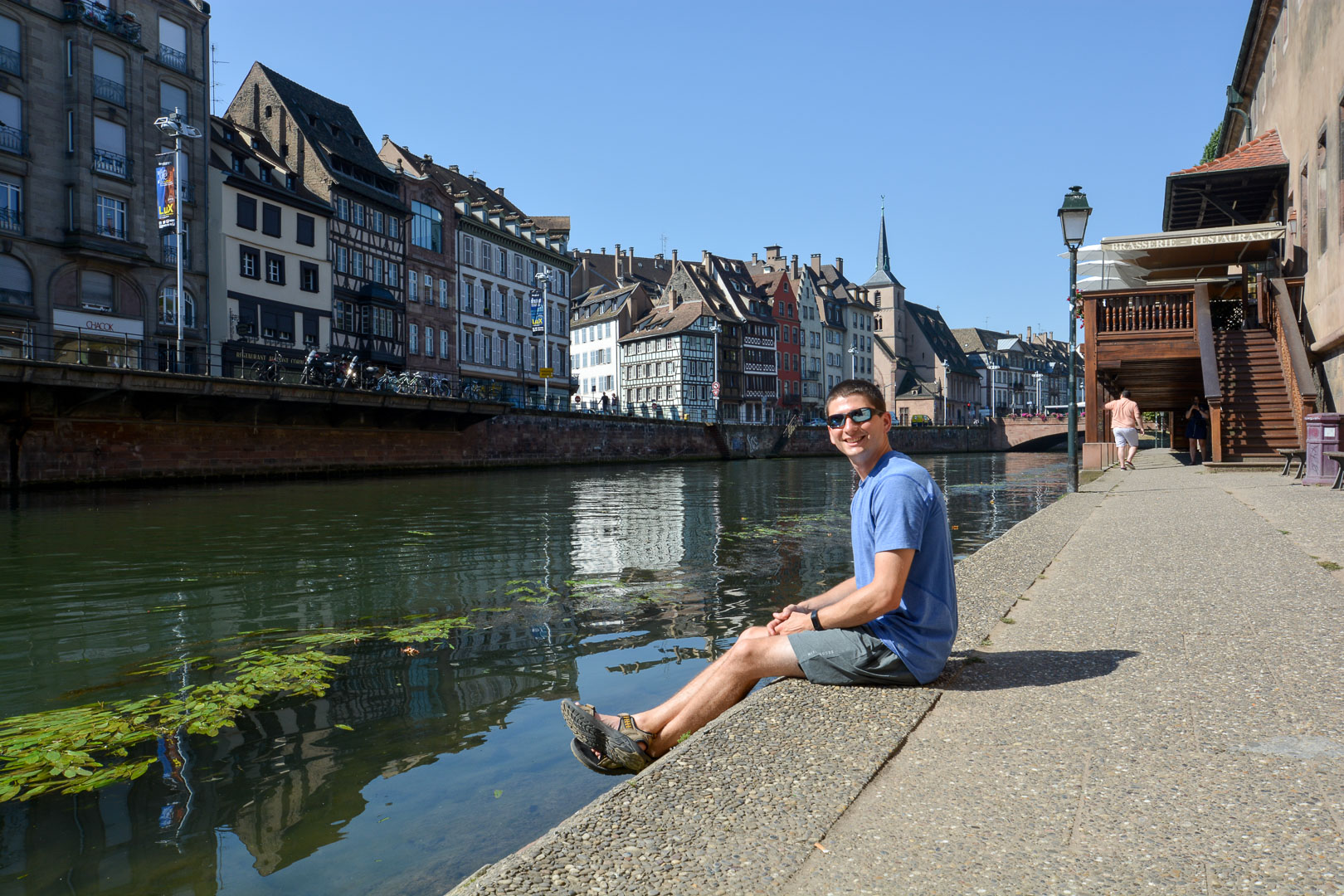Our Compact Guide to Strasbourg, France
This is in no way a full guide to Strasbourg, but we wanted to bring you a concise page of the highlights of our visit, and maybe some disappointments too. This is an honest guide with some transportation, food, activity, and sightseeing tips.
Where to Eat and Drink
Velicious Burger—a small vegan burger shop offering about six unique burger options to dine in or take away. We loved that they also had a delicious selection of cup cakes and other sweets. All of the burger combo options are reasonably priced too for the budget minded!
Total Gas Station on Boulevard de la Victorie—Just kidding!!! However we did have to go grocery shopping at the tiny convenience store because we arrived in Strasbourg on a Sunday and after noon so literally every single grocery store was closed and so were most restaurants!
East Canteen—We ate here when we arrived in Strasbourg after our first several options we walked to were closed because it was a Sunday. Happy this place was open and we really enjoyed the food here and the portions were a good size. The eastern cuisine was a nice change of pace too!
Supermarket—Traveling on a budget? We definitely are. If you are looking for a good wholefoods organic store we shopped at Biocoop for all our produce and some vegan specifics. Otherwise there are plenty of options for all the essentials. We found Carefour had limited selection, but had the best hours when in a pinch.
Want to use this map offline and on your phone? Check out this page for instructions: Click here
Things to Do and See
Take a walk around Strasbourg—The city center is walk-able in a day, and they have a great tram network to get around faster!
Strasbourg Cathedral —This towering monument stands at 466 feet tall and is the highest existing structure built completely in the Middle Ages. It was the tallest building in the world for 227 years (1647-1874) and offers a fantastic view of Strasbourg from the top. It is definitely worth climbing up to the top (price~5 euro) to get the view of the city and to notice many peculiar and interesting architectural elements up close. Our favorite architectural element (which we forgot to get a picture of) were the decorative arches which also served as the downspouts from the roof and leading into the gargoyles which would spout water from their mouths when it rained. We prayed for rain to see this in action, but no such luck.

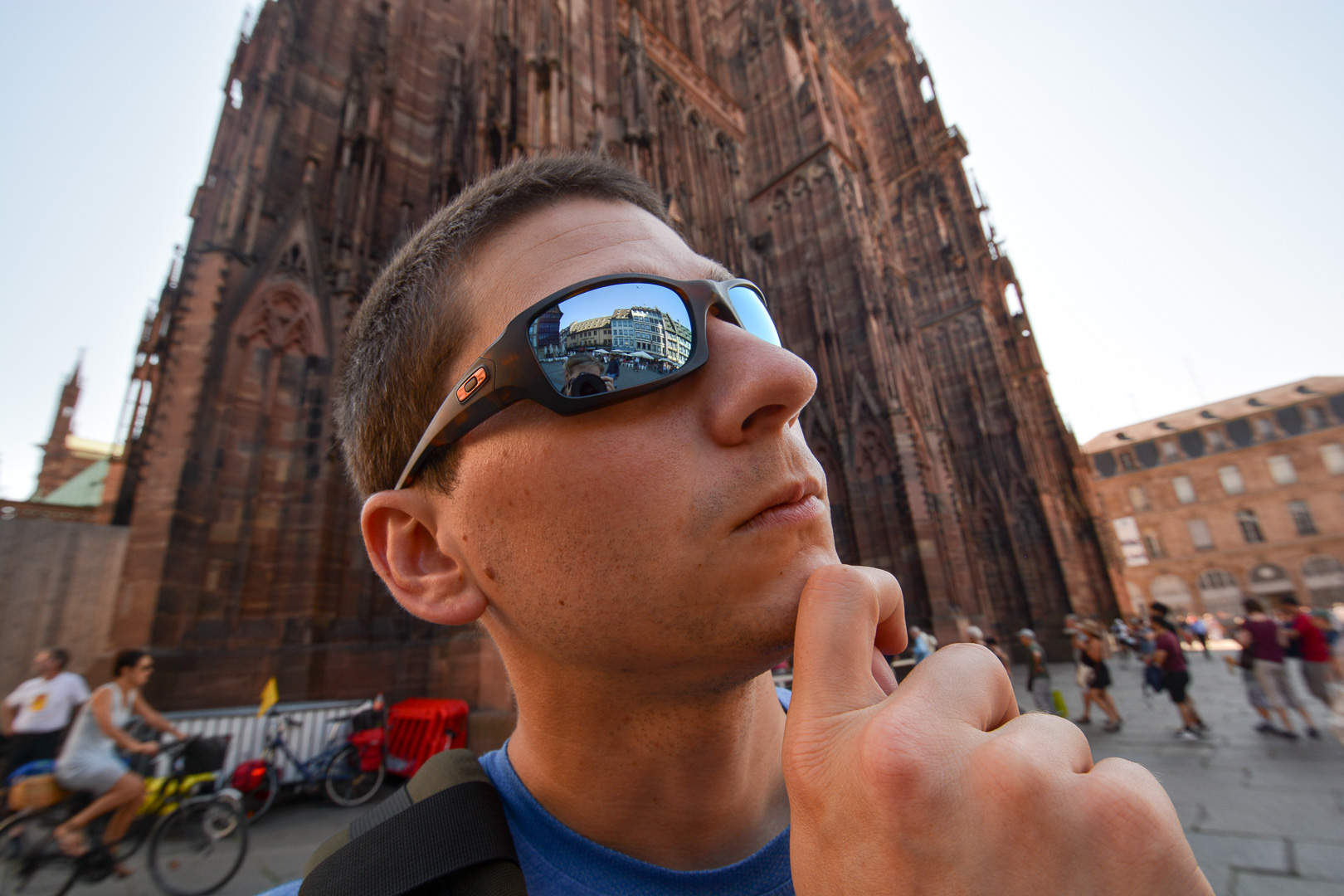

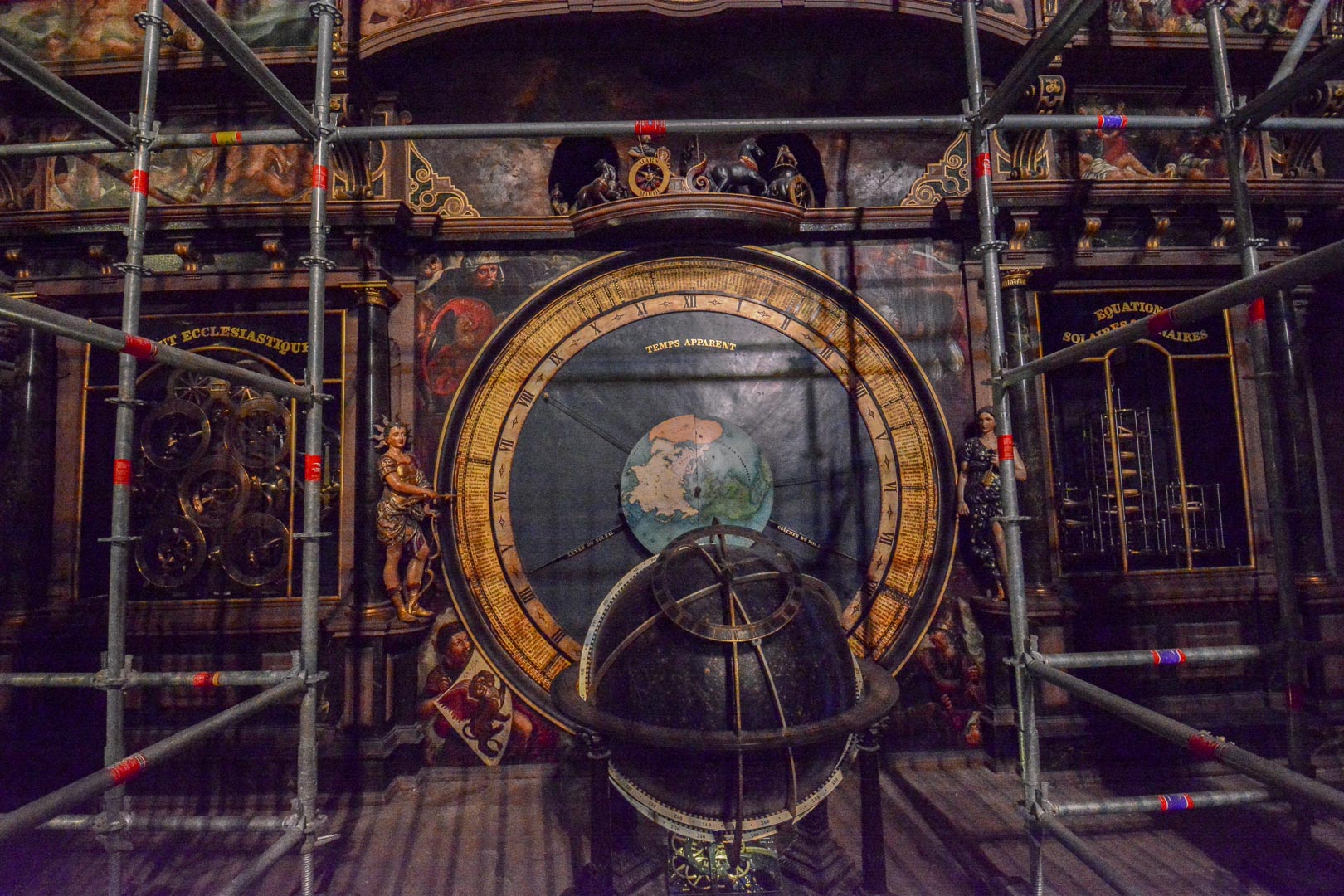

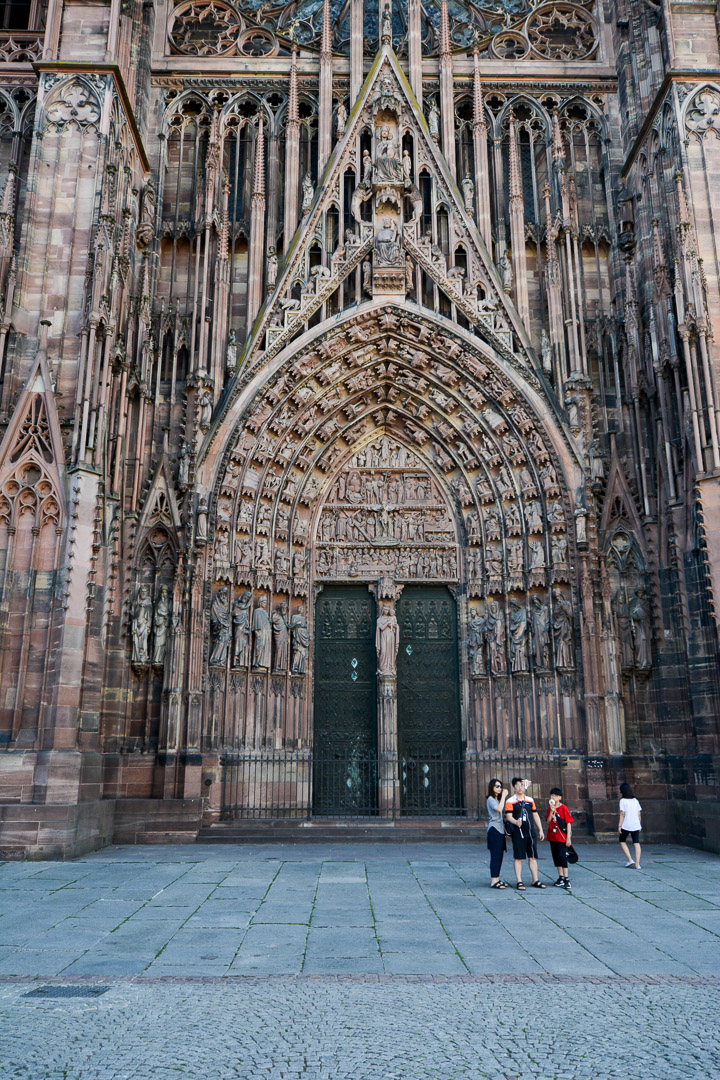
La Petite France—This was just a cute area to just walk around and explore. We felt a little confused when walking through the area because much of the architecture actually looked more German to us than French. Come to find out the name does not stem from a patriotic or architectural past, but from one slightly darker. The name comes from the “hospice of the syphilitic” which was built on the island to cure, you guessed it, syphilis! Buy what does syphilis have to do with petite France? Well it just so happens that the Germans decided to call syphilis Franzosenkrankheit which translates to “French disease”. I hope this does not discourage you from visiting la Petite France because it is quite pretty just be sure to cover yourself up ;).

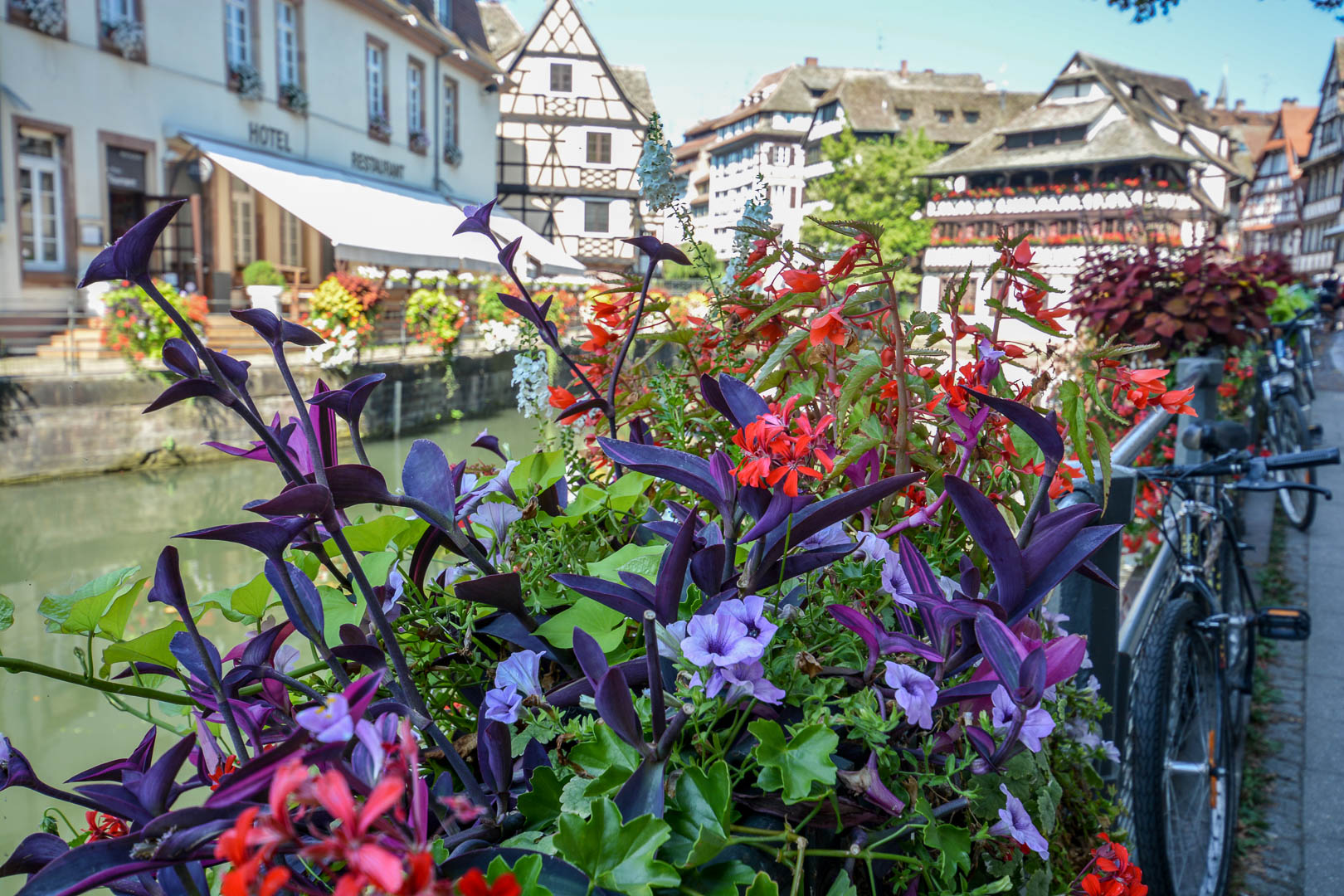
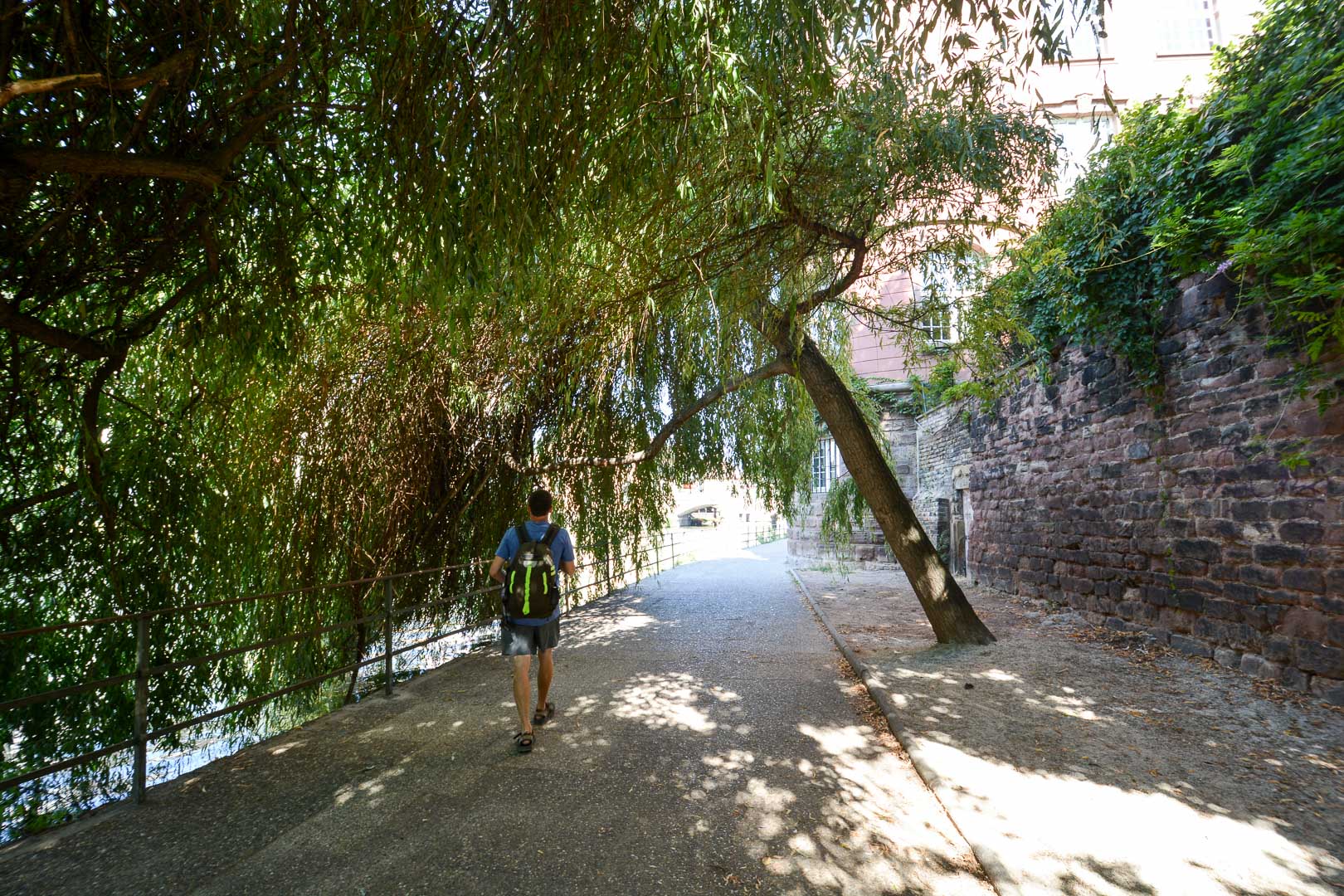

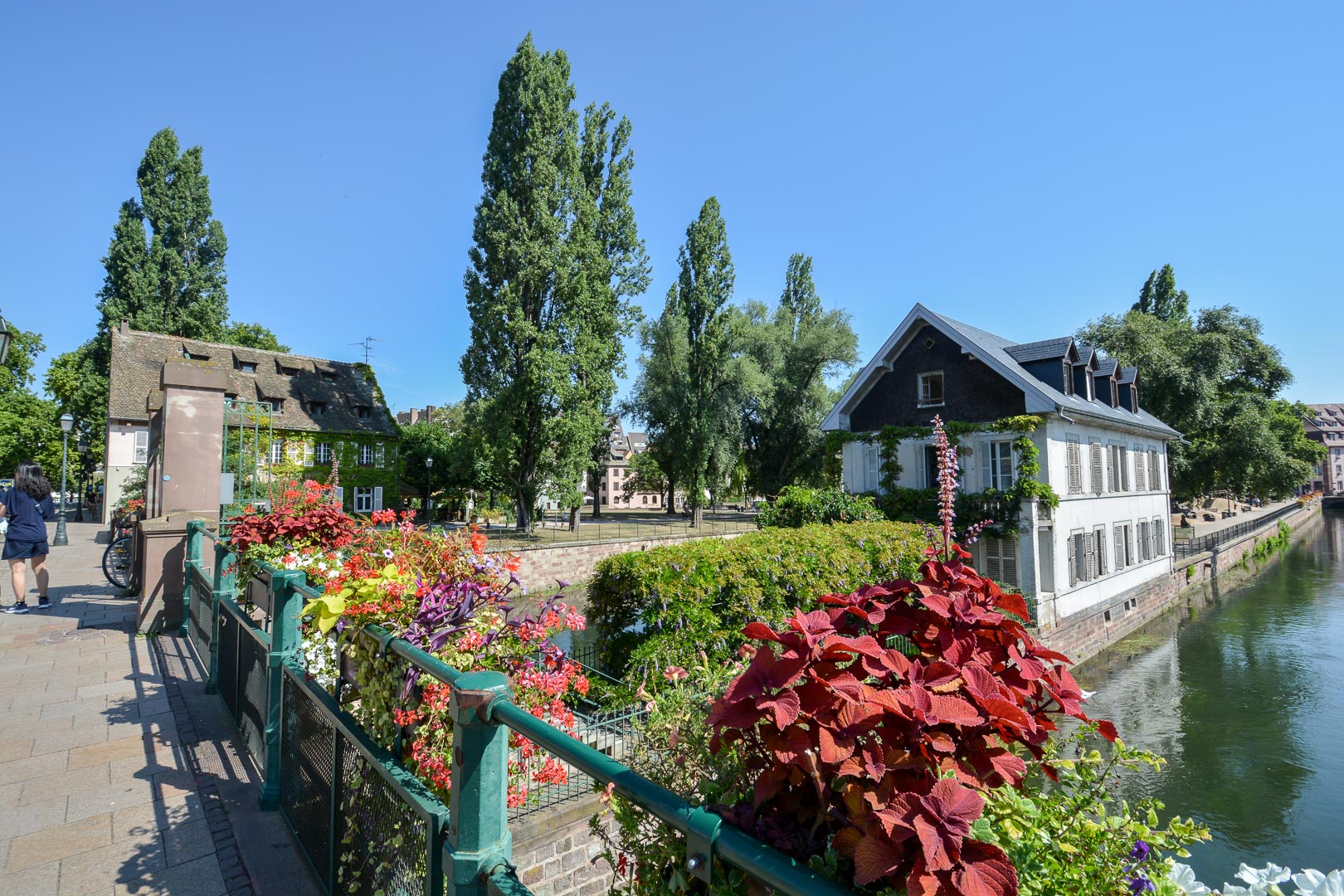
View from top of Barrage Vauban
Barrage Vauban & Ponts Couverts—These military remains are a stone’s throw away from La Petite France and both served to protect the city. The Ponts Couverts are a series of three bridges and four guard towers located at the headwaters of the River Ill and the city. Completed in 1250 the Ponts Couverts protected the city for about four hundred years until superseded by the construction of the Barrage Vauban in 1690 as the new primary defense system. We found the Barrage Vauban a fascinating engineering solution to the city defenses for the time period. This bridge is made up of 13 arches, three of which have drawbridges to permit passage by boat. Besides the obvious city defense with creating a blockade upstream, also built into the bridge was a ingenious solution to protect the city from siege in the south. Of course as civil engineers we are always fascinated when a solution to a problem involves the flow of water :). A series of weirs are also built into the arches of the bridge to control the flow of the River Ill. Downstream of the city are areas of low lying floodplain so by controlling the flow of the river the city could open the flood gates (the weirs) to wash away any foe that set up camp downstream. This system was successfully used in 1870 when the city was besieged by Prussian forces during the Franco-Prussian War.
Ponts Couverts
The windblown look…
Piscine Du Wacken—This option is definitely off the beaten path! Lauren began demanding pool days at each of our stops in July and August because of how insane the heat wave was in Europe. After our disappointment with the pool in Brussels we were determined to find an outdoor pool to cool off in and where we could read a book in the sun. You know just a good old American style pool. It actually took quite a bit of research for us to find this outdoor pool because so many in the Strasbourg area looked to be indoor and for lap swimming or an old man’s bathhouse. The layout of this pool complex was not unlike a water park back home minus the big slides and rides. There was ample lawn area for lounging around the 3 pools and kiddie play area. I would say the few hours we spent there was well worth the 5 euro entry fee. They do have free lockers, but bring your own towel and make sure you have the appropriate type of swim suit for men (the tiny European kind). Not joking they seriously require them.
Cute alley nearby the cathedral in Strasbourg
Transportation Tips
The city has a great tram network that is very easy to use. The provider of the tram system is CTS which offers an app for Android available at the link provided.
1. Tram
2. Walk
3. Skip
Where We Stayed
We stayed in a tiny but cozy Airbnb outside of the city center which by tram was only maybe a 15 minute ride to wherever we wanted to go. One of the positives of our Airbnb location was the amazing view of the city we had from our window. We shot all of these photos after looking out the window and seeing something that caught our eye happening in the sky!
We spent hours trying to get these lightning photos! I think we also took about 1,000 picture just trying to capture the strike!
